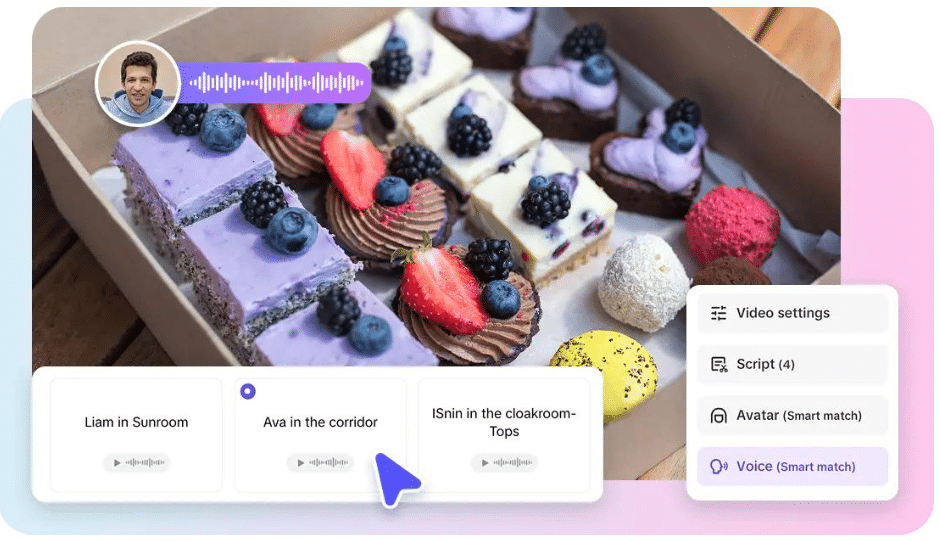A picture standing in front of a now-forgotten leader, artist, or inventor suddenly brought back to life, blinking, smiling, and speaking from the heart. With lip sync AI, it is no longer a fantasy. Educators, filmmakers, and museums employ them to reimagine history, transforming frozen images into expressive narrators who bridge the past with the present.
Tools such as Pippit enable it to be easy to bring aged portraits or archive photographs into alive narrators. With a click, the erstwhile quiet faces start telling stories, describing findings, or welcoming museumgoers. This creative rebirth has history coming out of books and onto screens, where people can see it in action through movement, personality, and voice.
From portraits to performances
Classic portraits have always managed to capture the essence of a person, but they could never really speak. Now, with technology, that frozen stare can speak again. When a scientist of centuries past describes their experiment or an ancient warrior tells their story, the moment becomes human.
For teachers, this translates into class coming to life. Museums can substitute static walls with interactive displays that speak and react. Documentaries can include actual figures “speaking” in their own voice without actors or high animation budgets. The aim isn’t to substitute history but to make it alive and relevant to contemporary listeners.
How movement transforms memory
Static images contain information, but motion conveys emotion. As a reconstructed character moves naturally, eyes darting, lips bending, or brows wrinkling, it makes a mundane clip into an emotional experience. Lip sync AI deals with this shift by synchronizing voice and motion flawlessly, mirroring speech patterns and expressions that seem human.
At the same time, photo to video AI creates the animation base, bringing facial features to life, introducing gentle gestures, and providing a realistic touch to archival photos. Together, these resources create the impression that the subject has indeed come back to tell their history in person.
Teaching through digital storytelling
History tends to bore students because it seems unrelated to their world. But when stories are presented by spirited historical figures, interest is ignited immediately. Consider Abraham Lincoln teaching leadership lessons or Cleopatra imparting knowledge of ancient society, all through realistic digital recreations.
It makes passive learning active. Lectures are no longer the only tool at the teachers’ disposal; they can allow history to speak. Brief videos produced via sites such as Pippit can condense dense material into entertaining, easy-to-remember nuggets.
Filmmaking that brings history back to life
For movie-makers, these technologies provide a budget-friendly and artistic revolution. Rather than casting actors or constructing costly sets, they can employ real portraits, truthful voice models, and true-to-life scripts to construct scenes that sound real. The public sees what historical figures might have appeared and sounded like, restored in a respectful manner, not fictionally.
Time-travel made simple: how to lip sync AI videos with pippit
Want to bring history to life yourself?
Step 1: access the video generator and select avatars
Login into Pippit and click Video generator from the left menu. Under the Popular tools column, choose Avatars to select or create AI avatars for your video. This tool enables easy syncing of voiceovers with avatars for dynamic and interactive content.
Step 2: choose an avatar and edit the script
Once you have access to the avatar tools, find your preferred avatar under the Recommended avatars option. You can filter avatars based on industry, gender, age, and more to find the right avatar for your video. After you select an avatar, you can press Edit script and adjust the dialogue. You can enter text in any language and the avatar will appropriately lip-sync. To make your video even better, scroll down to Change caption style and choose from a few different caption styles to match the tone of your video and provide additional engagement.
Step 3: export and share your video
Once you click on lip sync, you can select Edit more to continue editing your video. Select the video editor and the function to adjust script timing, voice timing, or facial expressions for better accuracy. You can also include additional elements like text overlays and background music to enhance your output. When you are complete, click Export and save your video as a file type of yours.
Where video agents come into the picture
The emergence of video agent, AI-based digital narrators, pushes this revolution further. These smart characters can lead users through virtual tours, describe museum pieces, or even engage with viewers in real time.
Imagine going to a museum and being welcomed in person by a historical explorer, or to a virtual classroom with a philosopher that responds to questions from students. Video agents create interactivity around authentic video clips to make history come alive. By using automation and creativity, they turn each viewer into an active participant in storytelling.
Digitizing archives with virtual life
Libraries, universities, and historians have thousands of portraits, still pictures, and artifacts tucked away. Now these archives can have voice and movement again with today’s AI software. Photo to video gives life to old materials, and lip sync technology evokes expression and rhythm. Whereas once silent faces stared from walls, today these museums are able to craft compelling digital content for social media, websites, or online galleries, encouraging new generations to discover lost voices in a whole new way.
Letting the past speak again
The wonder of Pippit is its potential to combine precision and imagination. When a figure from the past speaks through digital animation, it’s no longer a gimmick, it’s a new methodology of keeping history present.
Educators can spark curiosity through thoughtful recreation. Filmmakers can place fact within the art. And, institutions can ensure preservation will outlive technology. It is the voice of history now, clearer, louder, even more engaging than ever. If you’re ready for your favourite figures to tell their own stories again, try Pippit today. Reanimate their voices from the past into your present, let it continue to inspire the future.



